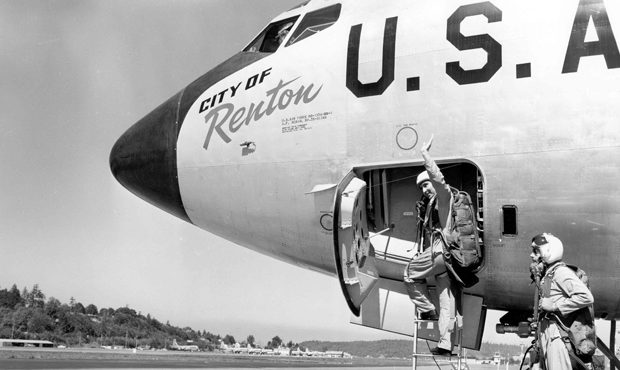
31 August 1956: The first production Boeing KC-135A Stratotanker, 55-3118, named City of Renton, made its first flight with company test pilots Alvin Melvin (“Tex”) Johnston and Richards Llewellyn (“Dix”) Loesch, Jr., on the flight deck.
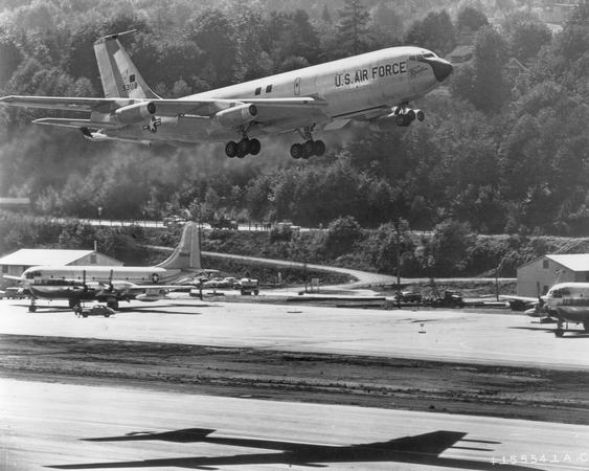
Built as an aerial refueling tanker to support the U.S. Air Force fleet of B-52 strategic bombers, an initial order for 29 tankers was soon followed by three additional orders, bringing the total to 275 airplanes by the end of Fiscal Year 1958.¹ Eventually 732 KC-135As were built by Boeing, and an additional 81 of other versions.
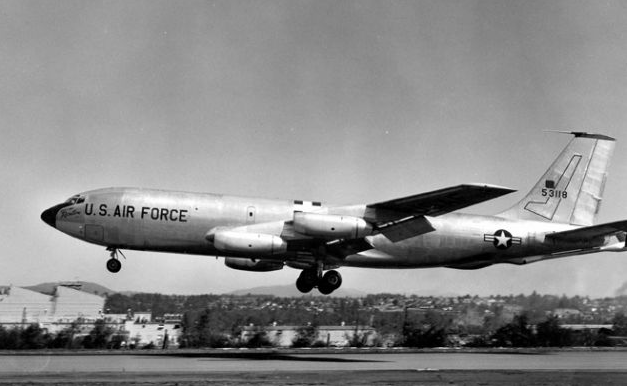
With the company internal designation of Model 717, the KC-135 was developed from the Model 367-80 proof-of-concept prototype, the “Dash Eighty.” The Stratotanker is very similar in appearance to the Model 707 and 720 airliners but is structurally a different aircraft. It is also shorter than the 707 and has a smaller diameter fuselage.
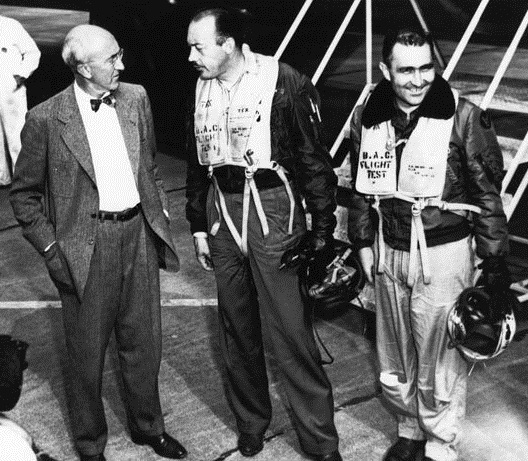
The Stratotanker was originally operated by a flight crew of four: pilot, co-pilot, navigator, and refueling boom operator. Upgrades over the decades have simplified operation and the crew has been reduced to two pilots and the boom operator. The tanker’s maximum transfer fuel load is 200,000 pounds (90,719 kilograms). The KC-135 can carry 83,000 pounds (37,648 kilograms) of cargo, and up to 37 passengers.It can also be configured to carry cargo or up to 32 passengers.
The KC-135A is 136 feet, 3 inches (41.529 meters) long, with a wingspan of 130 feet, 10 inches (39.878 meters) and overall height of 41 feet, 8 inches (12.700 meters). The Stratotanker’s maximum takeoff weight is 322,500 pounds (146,284 kilograms).
The KC-135A was powered by four Pratt & Whitney J57-P-59W turbojet engines. The J57 was a two-spool, axial-flow engine with a 16-stage compressor section (9 low- and 7-high-pressure stages) and a 3-stage turbine section (1 high- and 2 low-pressure stages). These engines were rated at 13,750 pounds of thrust (61.16 kilonewtons), each. The J57-P-59W was 183.5 inches (4.661 meters) long, 38.9 inches (0.988 meters) long and weighed 4,320 pounds (1,920 kilograms).
The Stratotanker fleet has been re-engined with more efficient CFM International CFM56 turbofan engines which produce 21,634 pounds of thrust (96.23 kilonewtons), each. The upgraded aircraft are designated KC-135R.
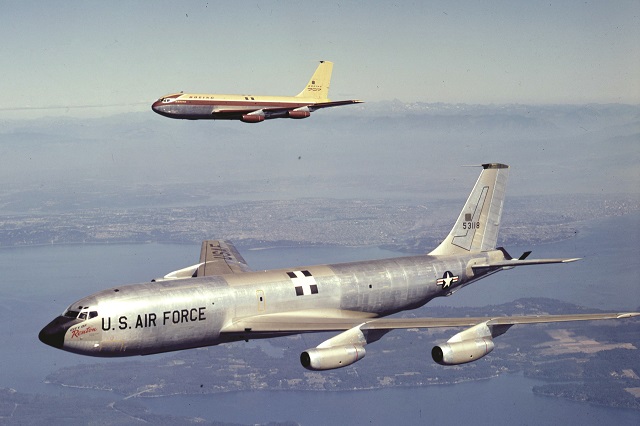
The tanker has a cruise speed of 530 miles per hour (853 kilometers per hour) at 30,000 feet (9,144 meters). The service ceiling was 50,000 feet (15,240 meters). Its range is 1,500 miles (2,414 kilometers) when carrying 150,000 pounds (68,039 kilograms) of transfer fuel, and the maximum ferry range is 11,015 miles (17,727 kilometers).
Of the 803 KC-135 aircraft built, 396 remain in service with the U.S. Air Force (as of 14 May 2018). It is estimated that the fleet is 33% through their design lifetime limits.
The first production airplane, 55-3118, was used for flight testing. It was later modified into an EC-135K Head Dancer airborne command post. Today, the first Stratotanker is on display at the front gate of McConnell Air Force Base, Kansas.
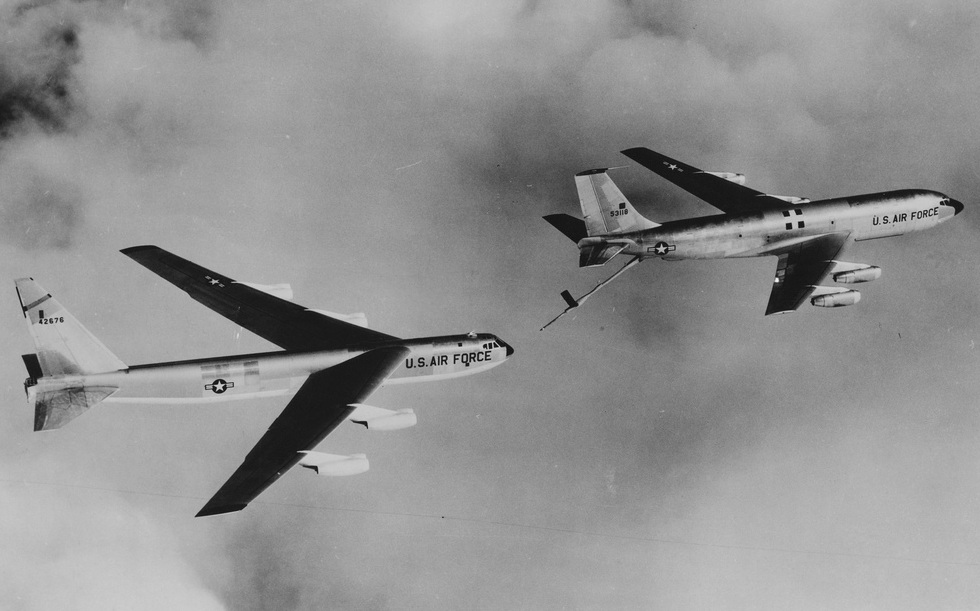
¹ KC-135A-BN: 57-1418–57-1514; 57-2589–57-2609; 58-0001–58-0130; total: 275
© 2018, Bryan R. Swopes